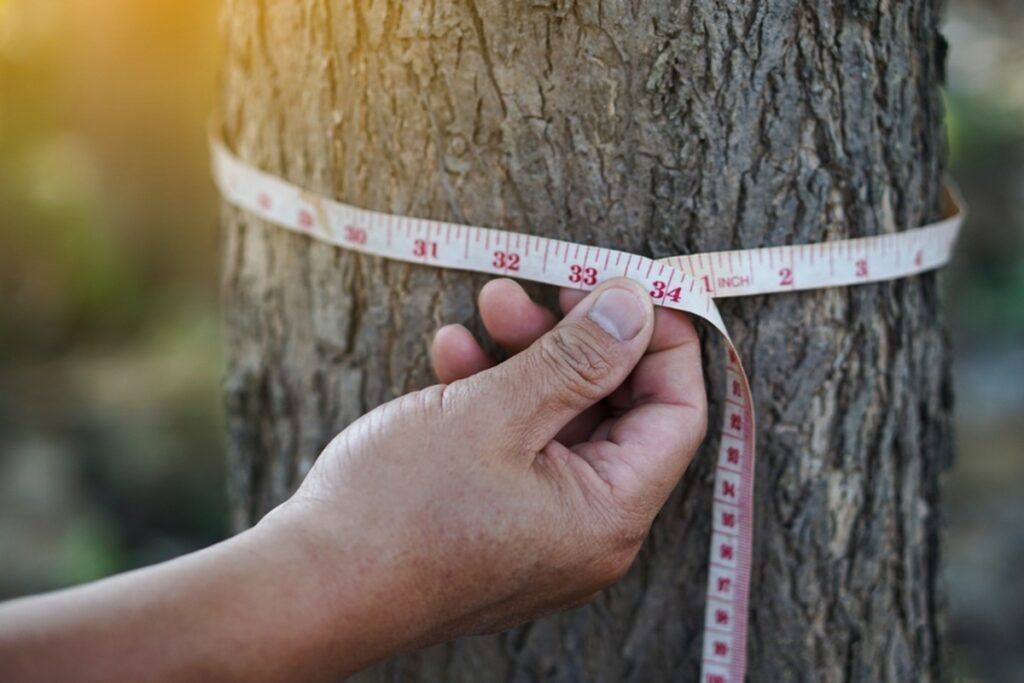Leicester and important natural habitats surrounding the city
Leicester is a thriving, multicultural city in the East Midlands that blends ancient history with ongoing urban transformation. Known for its Roman roots, medieval architecture and vibrant communities, Leicester has also made significant strides in promoting sustainable development and urban greening. With ambitious plans for housing and infrastructure growth, the city remains committed to protecting its natural assets, including woodland cover, making tree surveys in Leicester an essential requirement for developers, planners, and landowners.
The city benefits from a variety of green spaces that provide essential habitats, recreational opportunities and visual interest. Notable sites include Abbey Park, with its ornamental gardens and mature trees; Victoria Park, a popular destination for outdoor leisure; and Bradgate Park, just outside the city boundary, known for its ancient oak trees and free-roaming deer. These parks, together with tree-lined residential streets, nature corridors, and community woodlands, play a vital role in Leicester’s biodiversity strategy and are central to the city council’s approach to environmental resilience and public wellbeing.

Protecting trees in Leicester
As Leicester continues to expand and modernise, tree policies have become more integral to the planning process. Many of the city’s trees are safeguarded by Tree Preservation Orders (TPOs) or are located in conservation areas such as New Walk, Stoneygate and Old Humberstone. These protections are designed to prevent the unauthorised removal or damage of important trees. The potential impact of any proposed development must be reviewed carefully, making a tree survey often mandatory before any planning application involving or affecting trees will be accepted by Leicester City Council.

Tree surveys: how the process works
The most widely used assessment in the planning context is the BS5837 tree survey, named after the British Standard which outlines the correct procedures for surveying trees in relation to design, demolition, and construction. This type of survey is typically undertaken during the early stages of planning, when site layout decisions are still flexible. A qualified arboricultural consultant will visit the site to assess the trees’ condition, age, species, and structural integrity. They also measure crown spread, height and stem diameter and assign each tree a category based on its overall value and longevity. This ensures that the impact of development on existing trees is understood and can be factored into the final design.
Unsafe trees and retained trees
If dangerous or unhealthy trees are identified during tree surveys, they are flagged for remedial action. In some cases, this might mean felling a tree that is structurally unsound or poses a risk to people or property. However, where possible, trees are retained and incorporated into the development design. Recommendations are made to protect retained trees during all phases of construction, and alternative options such as planting new trees or repositioning development footprints are considered where tree loss is unavoidable.
Tree reports
Following the BS5837 tree survey, the arboricultural consultant compiles a detailed tree report which is submitted as part of the planning application. This document typically includes a Tree Constraints Plan and, where needed, supplementary materials such as an Arboricultural Impact Assessment, Arboricultural Method Statement, and a Tree Protection Plan. These components include construction recommendations for work to proceed while safeguarding existing tree cover. Planning authorities rely on this documentation to ensure that development proposals meet legal requirements and environmental standards.
Other reasons for tree surveys
Tree surveys are not limited to planning matters alone. They are also a key part of health and safety management on public and private land. Trees located near schools, highways, commercial buildings and housing developments must be inspected regularly to identify any potential risk. Strong winds, heavy rain, drought and disease can cause tree structures to deteriorate over time, and routine surveys help detect early signs of failure.
Recommendations from these inspections may include pruning, crown reduction, bracing, tree surgery or full tree removal of certain trees in extreme cases, always with the goal of reducing liability while preserving trees wherever feasible. Tree surveys may also be required to inform compliance with the Occupiers Liability Act or to help in drawing up a tree management strategy.

The Importance of Tree Surveys in Leicester
Leicester Council supports a proactive and informed approach to tree management, encouraging developers, landowners and tree owners to consider trees as valuable infrastructure in the local environment. Whether trees are protected by legal designation or simply form part of the site’s character, their role in urban biodiversity, shading, drainage and air quality is increasingly recognised as essential by local authorities.

Comprehensive Tree Survey Services
Our experienced arboricultural consultancy offers a full range of tree surveys in Leicester, the East Midlands and across the UK. We work with developers, architects, planners and tree owners to provide accurate, timely tree assessments and clear, policy-compliant reports for local authorities. Our team understands the specific requirements of Leicester’s local planning department and can guide you through the process from site visit to planning submission, providing reliable tree surveys to help you avoid unnecessary delays or objections.
Get in Touch for a Free Quote
If you need to arrange Leicestershire tree surveys for any reason, get in touch today. We offer free, no-obligation quotes and can arrange a site visit at a time that suits you. To request more information or book your tree survey in Leicester, simply call the number at the top of this page or complete our online contact form and one of our team will be happy to assist. If you decide to accept our quote, we will arrange a convenient time to visit your proposed development site and carry out a tree assessment.